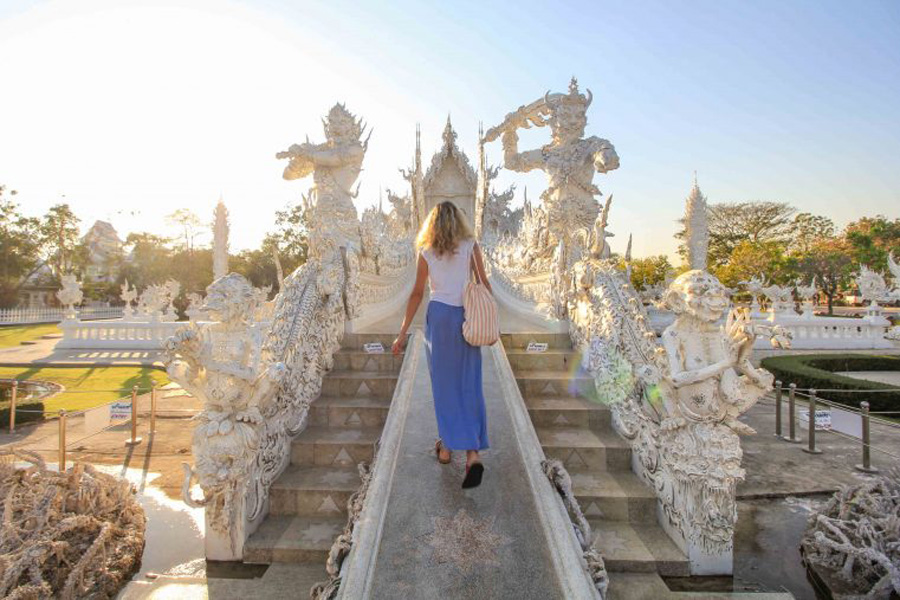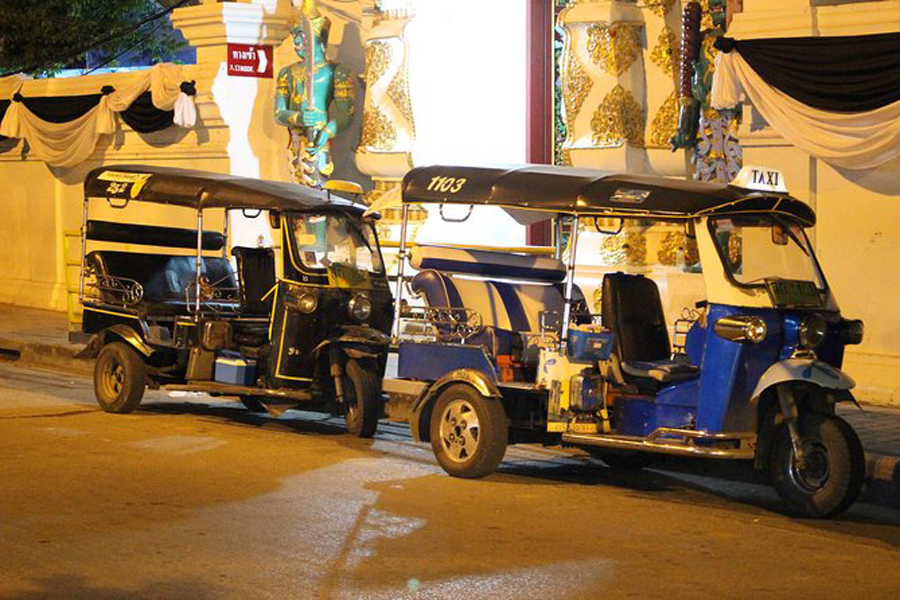Wat Rong Khun

Wat Rong Khun, or colloquially the White Temple, is an unbendingly loud and singularly bizarre Buddhist temple, one often looked upon for its all-white exterior and glass details, representing purity and wisdom. Conceived by the idea of a visionary artist named Chalermchai Kositpipat, this modern masterpiece leads the way, going forward from traditional temple design into what Buddhists, Hindus, and contemporary arts have in store within a surreal experience.

Wat Rong Khun known as the White Temple (Source: PlacesofJuma)
Since the temple began being constructed back in 1997, it has become a worldwide cultural phenomenon to capture the collective imagination of visitors with profound spiritual symbolism and extraordinary artistic expression.
Wat Rong Khun, located in Chiang Rai Province, which also includes northern Thailand. This modern temple in pure white was designed by Thai artist Chalermchai Kositpipat to symbolize the Lord Buddha's purity and was decorated with parts of mirrors glimmering in sunlight.

Wat Rong Khun located in Chiang Rai Province (Source: Zoom Travel)
Unlike most of the traditional Thai temples, Wat Rong Khun consists of an element of Buddhism and Hinduism, even from pop culture. It thus takes one through a visually appealing journey of sculpture and mural details. Since its building in 1997, it has grown to be a cultural icon that provides a means for visitors to travel in modern art combined with spiritualism.
Wat Rong Khun is accessible, as it's roughly 13 kilometers south of Chiang Rai City Center. That said, one could drive there by car or motorcycle by taking Highway 1 for a 20-minute ride, ideal for those who want flexibility to explore nearby attractions. All in all, tuk-tuks and taxis are widely offered in Chiang Rai; agree on the round-trip price upfront, which may run between 300-500 THB.

Tuk-tuks in Wat Rong Khun (Source: Viator)
The local buses are available from the main terminal in Chiang Rai for budget travelers. It takes approximately 30-40 minutes with a fare of about 20 THB. The bus will drop you off near the temple; from there, it's a short and easy walk through to the brilliant white facade of the temple.
Read more: Chiang Rai Tour 3 days: Golden Triangle Exploration
A number of things will make a person awe-struck at the Wat Rong Khun, commonly known as the White Temple: the sight of the following.
Speaking of the outer part of this temple, one should note the all-white striking façade, with neat and complicated designs, and with pieces of mirrored glass amounting to thousands. It symbolizes purity and enlightenment.

White Exterior Wat Rong Khun (Source: Vietjet Air)
One must cross a bridge before entering the temple. This bridge signifies one's crossing from the cycle of rebirth into the path to enlightenment. Along its sides are carved sculptures of grasping hands, which symbolize desire and suffering.

Bridge of the Cycle of Life (Source: Ray Cannon's travel blog)
Statues and sculptures of key figures in Buddhism dot the grounds, together with some aspects representative of Thai culture.

Buddha Statues (Source: iStock)
This place of worship therefore combines an exciting mix of spirituality with modern art. For any tourist visiting northern Thailand, Wat Rong Khun is a definite place to visit. From its snow-white facade to the murals evoking reflection, every aspect calls one to reflect upon its peculiar artistic vision. Whether you are a culture enthusiast or just a casual visitor, the White Temple promises an unforgettable experience. To catch a glimpse of this renowned Wat Rong Khun and other stunning places, book your tour with Asia King Travel for a more personalized and hassle-free journey.
Read more: Songkran Festival Thailand: Traditions and New beginnings